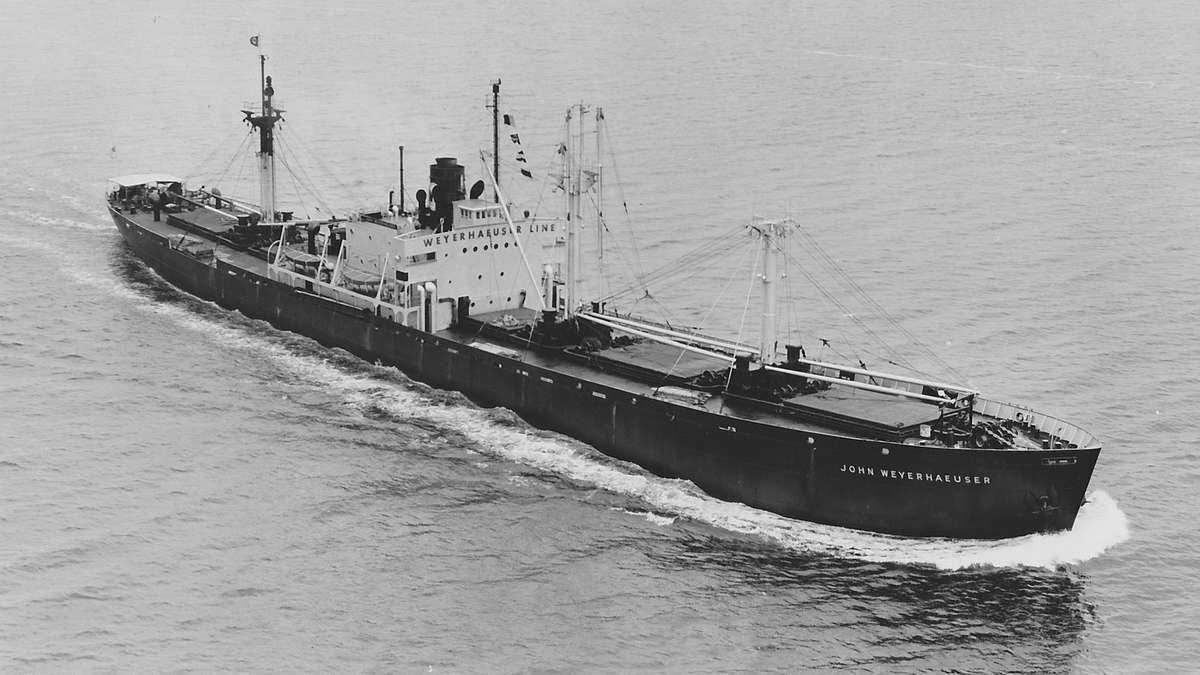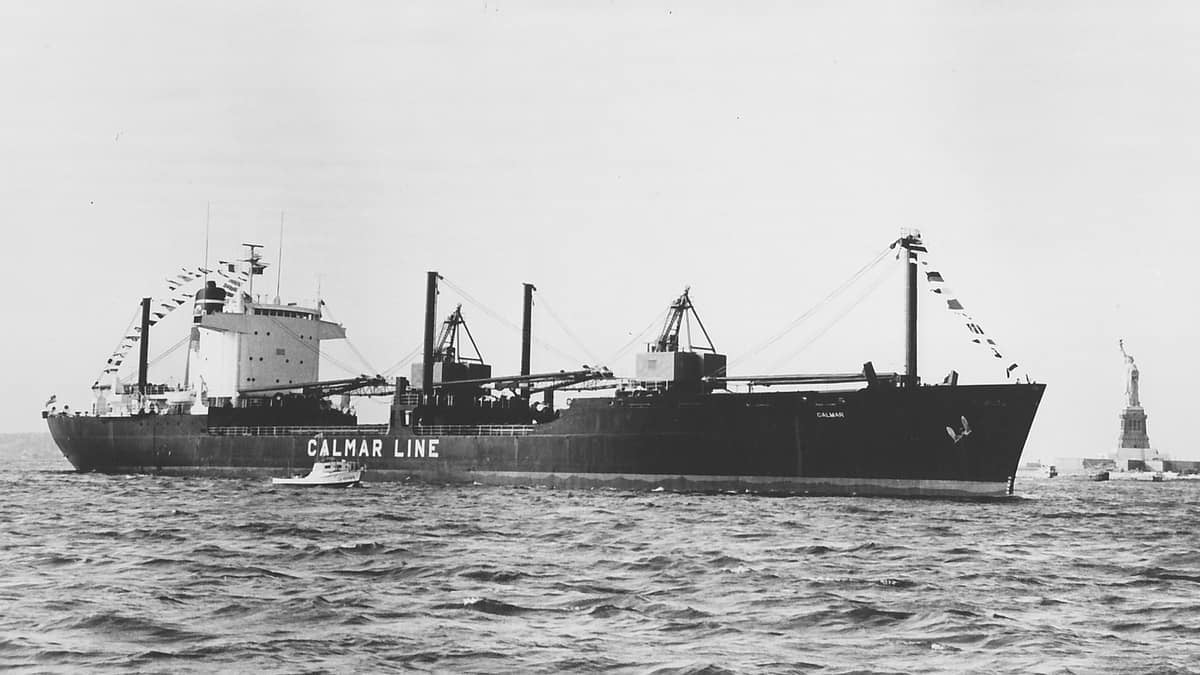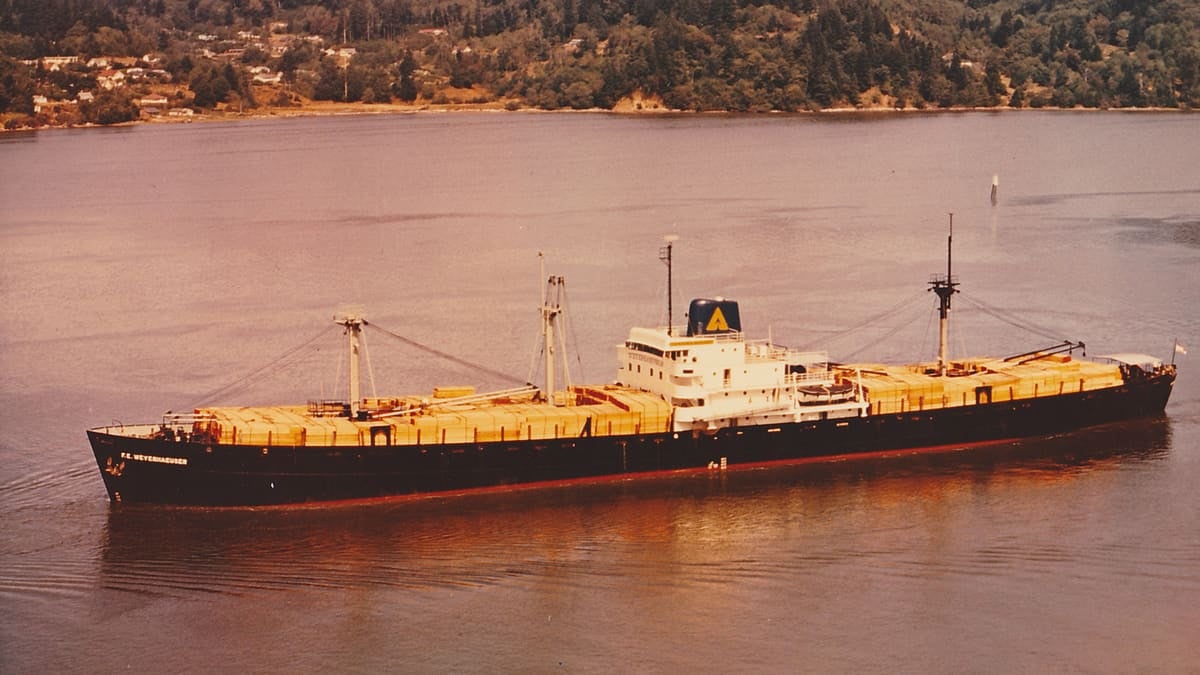FreightWaves Classics is sponsored by Sutton Transport, an LTL leader in the Midwest for more than 40 years. Sutton Transport proudly services Illinois, Minnesota, Missouri and Wisconsin. Request a quote here.
For over 100 years, U.S.-flag ships carried lumber from the West Coast to the East and Gulf coasts. About 40 ships were regularly employed in this trade, making about 200 voyages annually. Additionally, more than 200 smaller ships — steam schooners affectionately called the Scandinavian Navy — transported lumber from the Pacific Northwest to San Francisco and Southern California.
An interesting feature of this trade was that many of the ships were owned by lumber companies that sought to control their supply lines. Since most sawmills in the West were located on navigable waterways, it was efficient to use ships to transport lumber to company-owned terminals or yards at Atlantic, Gulf or Caribbean ports.
In the days before port authorities, most seaports had coal piers owned by the railroads or mining companies. The same could be said for commodities such as grain, iron ore and bananas, as well as lumber. In 1960, for example, there were nine privately owned lumber piers in the New York port area.
Lumber rush meets Gold Rush
Unlike most trades, the intercoastal lumber transport business had a well-defined existence.
In 1848, a timberman named John Marshall constructed the first lumber mill for landowner John Sutter, on whose property gold was found and led to the storied California Gold Rush a year later.
Thousands of prospectors traveled to California in hope of finding fortune. These people, however, needed shelter and this fostered a massive construction boom.
In March 1850, the brig Oriental arrived from Maine with a cargo of lumber. Capt. William G. Talbot recognized the need for lumber in California and helped establish the Pope and Talbot Lumber Co. The company set up a sawmill operation in the Pacific Northwest to supply lumber for the growing California population. By 1854, lumber was also exported to the South Pacific and Far East.
The Klondike Gold Rush followed in 1896 and the Pacific Northwest lumber industry found another booming population to serve.
Weyerhaeuser, which became a giant in the U.S. lumber industry, started its West Coast lumber operations in 1900. The company found that the existing coastal carriers, such as American Hawaiian and Luckenbach, offered regular service but with unpredictable rates and capacity.

After World War I, the U.S. government offered wartime vessel tonnage to the private sector at very reasonable prices. Thus, Weyerhaeuser, like most lumber companies, purchased these ships and began its own shipping operations by the early 1920s.
The opening of the Panama Canal in 1914 also created a strong demand for West Coast lumbermen to meet the increased infrastructure requirements on the East Coast.
Within days of opening the Panama Canal, the ship Oregonian, owned by the American Hawaiian Steamship Co. and operated by the A.C. Dutton Co., carried the first full load of lumber through the locks en route to the Dutton Poughkeepsie Terminal in New York. By this time, a cargo of lumber could be shipped to the East Coast and then loaded in railcars and delivered back to St. Louis cheaper than moving the lumber across the Rocky Mountains by rail.
The Dollar success story
Capt. Robert Dollar, who was born in 1844 to a lumber family, ventured into shipping in 1895, after he purchased the 125-foot-long Newsboy, a steam schooner of 185 tons designed for the lumber trade. Dollar went on to build a fleet of similar vessels and greatly benefited from the Klondike Gold Rush.
In 1902, Dollar organized the Dollar Steamship Co. to operate a fleet of steam schooners between the sawmills of the Northwest and California. The company kept expanding its lumber assets and acquired lumber terminals around the country, including a 42-acre site at Hunts Point, New York.
Dollar kept building his fleet of oceangoing ships and eventually entered the Far East and other international trades.
The company used its acumen in the lumber business to ensure bottom cargoes for its ships. An example of this occurred when Dollar visited Japan. He found a forest of virgin oak timber that he purchased and cut up for railroad ties, which he then transported and sold to China.
Japanese oak was also transported on Dollar’s ships to San Francisco for sale to the Southern Pacific Railroad. The company continued to grow until the Depression of the 1930s, when it evolved into the American President Lines.
Dant and Russell was also one of the great American lumber companies at the time. The company took the advice of Robert Dollar, who said the only way to guarantee space to one’s lumber operation was to control the transportation system. Thus, Dant and Russell formed the U.S.-flag States Steamship Co. in the late 1920s, along with Pacific and Atlantic Steamship Co. that operated on the intercoastal route as the Quaker Line.
Like most the intercoastal carriers at the time, including the Shepard and Morse Lumber Co.’s Shepard Line, 75% of the vessel capacity was loaded with lumber and the remaining capacity available for California canned goods.
Over the years, these lumber companies frequently chartered ships from other steamship companies, such as Waterman, States Marine, Isthmian, Luckenbach and Maritime Overseas, to supplement their fleets.
A unique feature of the intercoastal lumber trade during the age of steam was that most of the ships were built for World War I and World War II service. The Liberty ships became the prime carriers after World War II.
US lumber sails to the end

Calmar Steamship Co., founded in 1927, was unique in the lumber trade. It was founded by Bethlehem Steel to carry steel products from the Baltimore Sparrows Point steel mill to the West Coast. The company relied on West Coast lumber to reposition their ships to the East Coast. Calmar operated as a contract carrier westbound while offering a common carrier service eastbound. In early 1960, Calmar was the first company to offer pre-slung packaged lumber.
With the advent of steel imports from Japan in the 1960s, coupled with the arrival of more efficient foreign-built bulk carriers, U.S. lumber companies started losing market share to Canadian sawmills. This market shift forced Calmar to end its intercoastal service in 1975 with the last sailing of the Portmar in June that year. Thus, after 125 years, the last dedicated intercoastal lumber carrier sailed into history.

Four U.S. lumber companies, however, attempted to reenter the maritime trade in the 1970s by chartering a large barge that was originally built to transport pipe for the Alaskan oil pipeline. After 16 trips, the venture ended.
Today, the American railroads dominate the transport of West Coast lumber throughout the U.S.
FreightWaves Classics articles look at various aspects of the transportation industry’s history. If there are topics that you think would be of interest, please send them to fwclassics@freightwaves.com.







